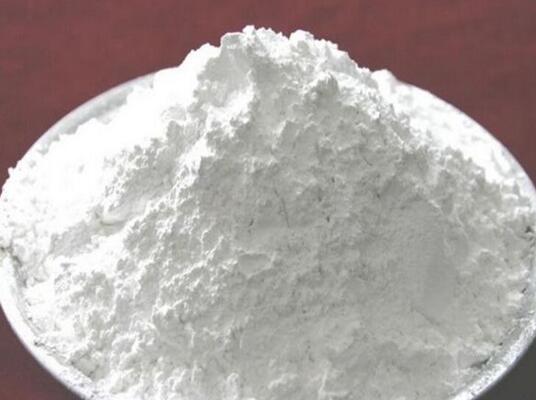Preparation of Active Magnesium Oxide by Alkaline Regulated Calcination of Magnesium Chloride Hexahydrate

Active Magnesium Oxide (AMO) is widely used in rubber, plastic, medicine, environmental protection and other fields due to its high activity, excellent hygroscopicity and chemical stability. Magnesium chloride hexahydrate (MgCl₂•6H₂O) is a common magnesium salt that can be converted into active magnesium oxide through proper treatment.
Magnesium chloride hexahydrate is a white crystalline powder that is easily soluble in water and is one of the important raw materials for the preparation of magnesium salts and magnesium compounds. In the process of preparing active magnesium oxide, magnesium chloride hexahydrate first needs to be dehydrated and then calcined under specific conditions to generate highly active magnesium oxide.
Preparation process
Dehydration treatment
Magnesium chloride hexahydrate is dissolved in water to form a solution.
By heating and evaporating water, magnesium chloride hexahydrate loses its crystal water to form anhydrous magnesium chloride (MgCl₂).
Alkalinity regulation
Add an appropriate amount of alkaline substances (such as sodium hydroxide NaOH, potassium hydroxide KOH, etc.) to the dehydrated anhydrous magnesium chloride solution to neutralize the acidity of magnesium chloride and form an alkaline salt of magnesium.
The amount of alkaline substance added needs to be adjusted according to actual needs to achieve the required pH range, usually controlled between 9-11.
Precipitation and washing
In an alkaline environment, magnesium chloride reacts with alkaline substances to form magnesium hydroxide precipitate (Mg(OH)₂).
The precipitate is separated by filtration and repeatedly washed with deionized water until the filtrate does not contain chloride ions (Cl⁻).
Drying and calcination
The washed magnesium hydroxide precipitate is dried to remove the water therein.
The dried magnesium hydroxide is calcined at a certain temperature to generate active magnesium oxide.
The calcination temperature is usually controlled between 400-800°C, and the specific temperature depends on the performance requirements of the required active magnesium oxide.
Influencing factors
Selection and addition of alkaline substances
Different alkaline substances have different effects on the activity of the final product. Sodium hydroxide (NaOH) or potassium hydroxide (KOH) is usually selected as the alkaline substance.
The amount of alkaline substances added needs to be adjusted according to actual needs to ensure that the pH value is within the appropriate range. Excess or insufficient amount will affect the activity of the product.
Calcination temperature and time
The calcination temperature has a significant effect on the activity of the product. Lower calcination temperatures (such as 400-500°C) are conducive to maintaining high activity of the product, but may affect the purity of the product.
Higher calcination temperatures (such as 700-800°C) can make the product purer, but may reduce the activity of the product.
The calcination time also needs to be properly controlled. Too short or too long will affect the quality of the product.
Calcination atmosphere
The atmosphere used during the calcination process will also affect the activity of the product. Air is usually used as the calcination atmosphere, but in some cases, inert gases (such as nitrogen) can also be used to protect the product from oxidation.
Raw material purity
The purity of magnesium chloride hexahydrate has a direct impact on the quality of the final product. Impurities in the raw materials will affect the purity and activity of the product.
Performance evaluation
Activity determination
The activity of the product is evaluated by measuring the specific surface area (BET method). The larger the specific surface area, the higher the activity of the product.
The activity of the product is further verified by adsorption performance tests (such as the adsorption capacity of acid dyes).
Purity detection
The purity of the product is detected by chemical analysis methods (such as X-ray diffraction XRD, infrared spectroscopy FTIR, etc.) to ensure that there are no residual chlorides or other impurities in the product.
Microstructure analysis
The microstructure of the product is observed by scanning electron microscopy (SEM) to evaluate its particle size and morphological characteristics.
Application field
Active magnesium oxide has a wide range of applications in the following fields due to its high activity and excellent chemical stability:
Rubber industry: as a reinforcing agent for rubber products to improve the physical and mechanical properties of rubber.
Plastic industry: as a flame retardant and stabilizer for plastic products to improve the heat resistance and flame retardant properties of plastics.
Pharmaceutical industry: as an excipient for drugs, used to prepare antacids, indigestion drugs, etc.
Environmental protection field: as an adsorbent for wastewater treatment to remove heavy metal ions and organic pollutants in water.
The active magnesium oxide can be prepared by the alkaline controlled calcination method of magnesium chloride hexahydrate, which can effectively control the activity and purity of the product. By optimizing the process parameters such as the selection and addition of alkaline substances, calcination temperature and time, and calcination atmosphere, high-performance active magnesium oxide can be obtained. Future research will further explore more efficient technical means to continuously improve the preparation process level of active magnesium oxide.








